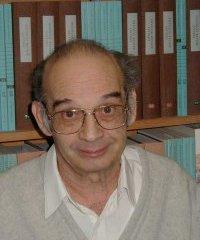Thomas Kuhn Quotes
Thomas S. Kuhn (2012). “The Structure of Scientific Revolutions: 50th Anniversary Edition”, p.113, University of Chicago Press
Thomas S. Kuhn (2012). “The Structure of Scientific Revolutions: 50th Anniversary Edition”, p.64, University of Chicago Press
"The Structure of Scientific Revolutions". Book by Thomas Kuhn, 1962.
Thomas S. Kuhn (2012). “The Structure of Scientific Revolutions: 50th Anniversary Edition”, p.76, University of Chicago Press
Thomas S. Kuhn (2012). “The Structure of Scientific Revolutions: 50th Anniversary Edition”, p.152, University of Chicago Press
"Donald Davidson: A Short Introduction". Book by Kathrin Glüer, p. 213, December 5, 2011.
"The Structure of Scientific Revolutions: 50th Anniversary Edition".
Thomas S. Kuhn (2011). “The Essential Tension: Selected Studies in Scientific Tradition and Change”, p.234, University of Chicago Press
Communication across the revolutionary divide is inevitably partial.
Thomas S. Kuhn (2012). “The Structure of Scientific Revolutions: 50th Anniversary Edition”, p.148, University of Chicago Press
Normal science does not aim at novelties of fact or theory and, when successful, finds none.
Thomas S. Kuhn (2012). “The Structure of Scientific Revolutions: 50th Anniversary Edition”, p.52, University of Chicago Press
Thomas S. Kuhn (2012). “The Structure of Scientific Revolutions: 50th Anniversary Edition”, p.84, University of Chicago Press
Thomas S. Kuhn (2012). “The Structure of Scientific Revolutions: 50th Anniversary Edition”, p.24, University of Chicago Press
Thomas S. Kuhn (2012). “The Structure of Scientific Revolutions: 50th Anniversary Edition”, p.93, University of Chicago Press
Thomas S. Kuhn (1970). “The Structure of Scientific Revolutions”
Thomas S. Kuhn (2012). “The Structure of Scientific Revolutions: 50th Anniversary Edition”, p.113, University of Chicago Press
Thomas S. Kuhn (2012). “The Structure of Scientific Revolutions: 50th Anniversary Edition”, p.90, University of Chicago Press







